Have you ever had an electrostatic shock from a shopping trolley or escalator or noticed your hair standing on end when you rub a balloon on it? The shock is caused by static ( non-moving ) electricity, which is caused by electrons building up with no circuit to flow along.
An object that has gained electrons has a negative charge. An object which has lost electrons has a positive charge. When a charged object is near another charged object, the two will either attract or repel each other.
Objects with a charge try to gain or lose electrons to become neutral again. Sometimes, you can see a tiny flash as the electricity is discharged.
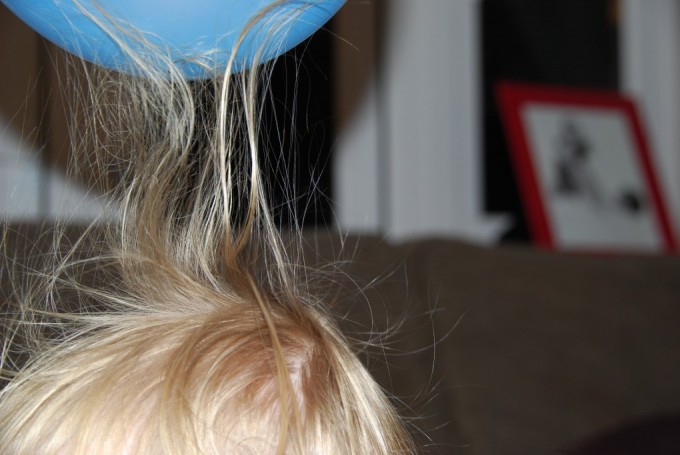
Remember – opposite charges attract, and like charges repel
What is an atom?
All materials are made of atoms.
Atoms contain tiny particles called protons, neutrons and electrons (subatomic particles ). Protons and neutrons are found in the nucleus of an atom. Protons are positively charged. Negatively charged electrons orbit the nucleus. Atoms usually have an overall neutral charge.
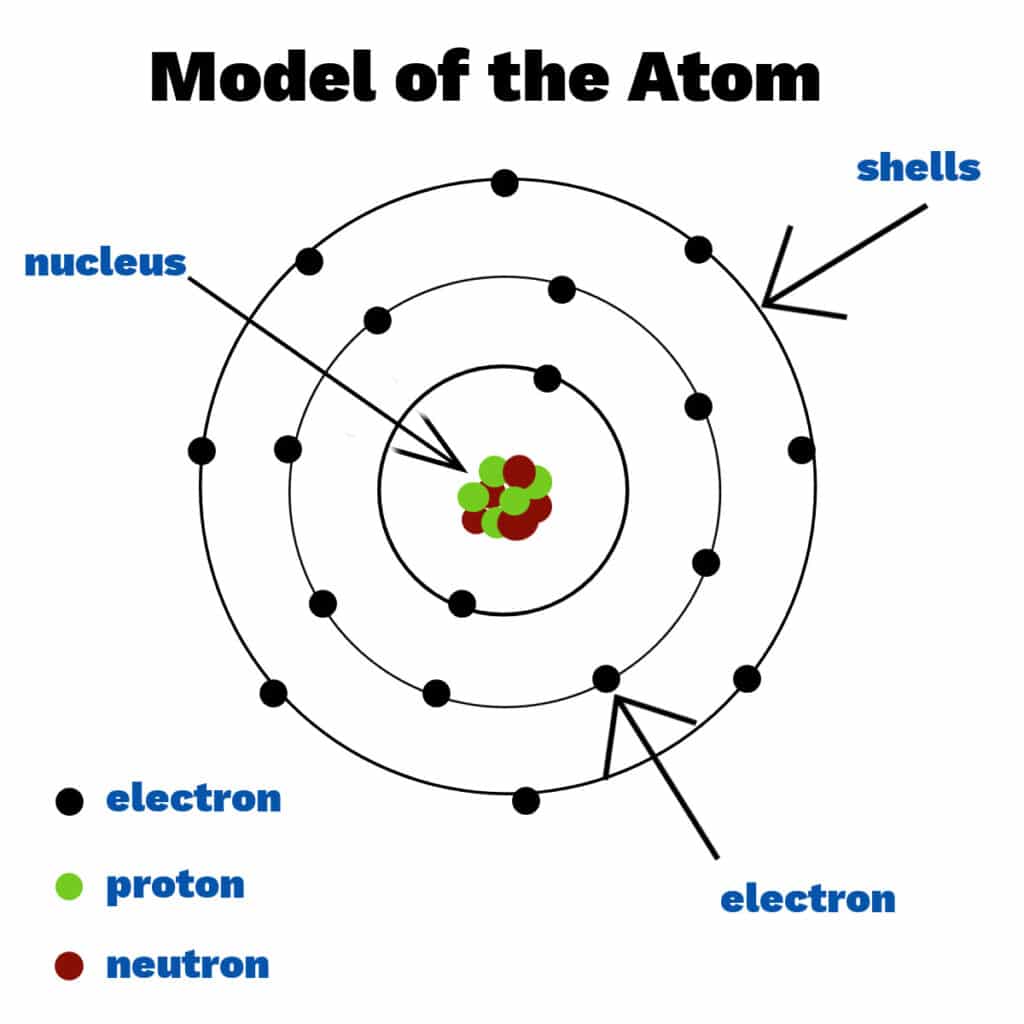
Why do balloons become charged with static electricity?
Balloons and other objects, like fluffy jumpers, can steal electrons from other surfaces. The extra electrons give the balloon a negative charge, which attracts other things, such as tissue paper, which jump up to the charged balloon.
Why does a balloon charged with static electricity stick to a wall?
When you rub a balloon on your hair, electrons are transferred to the balloon, giving it a negative charge. When you place the balloon on a wall, it sticks. This is because the negative charge on the balloon repels the negative charges on the wall, creating a positively charged surface to attract the negatively charged balloon. This is attraction by induction.
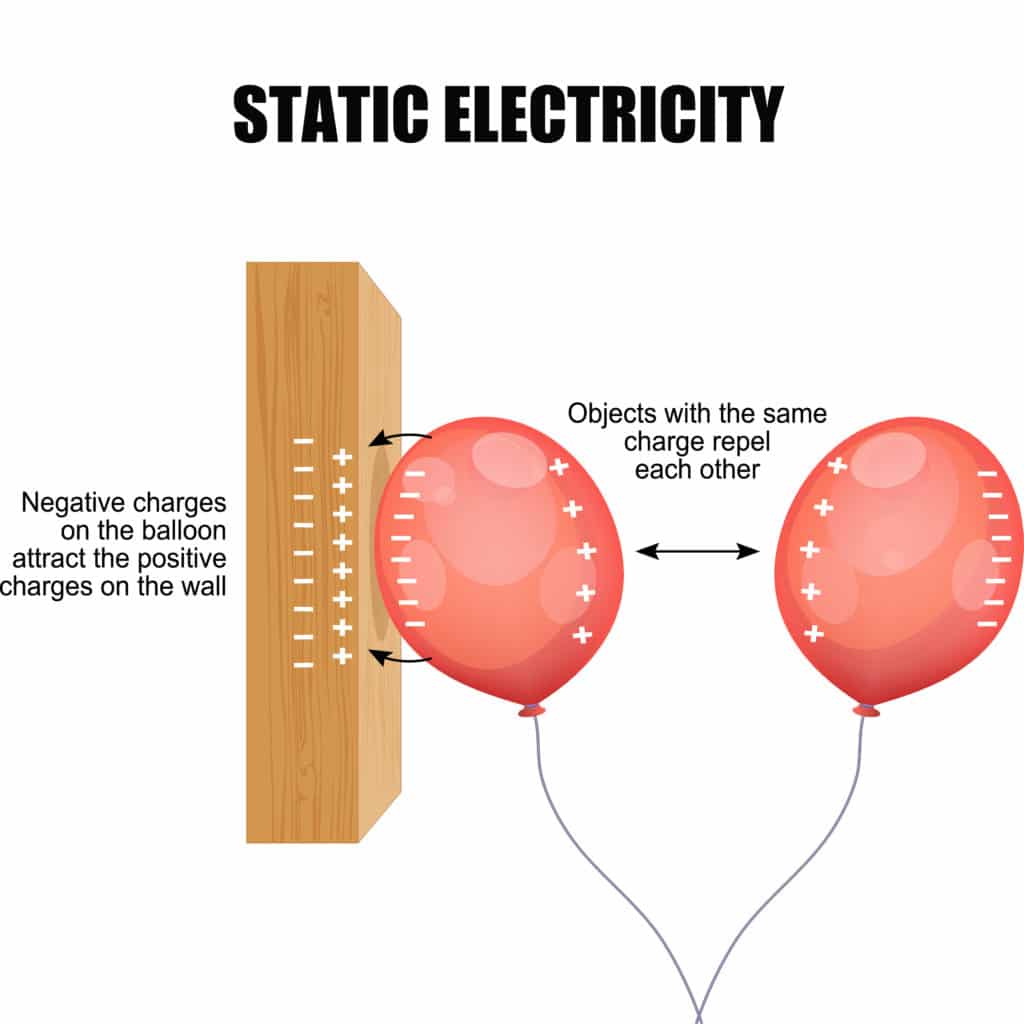
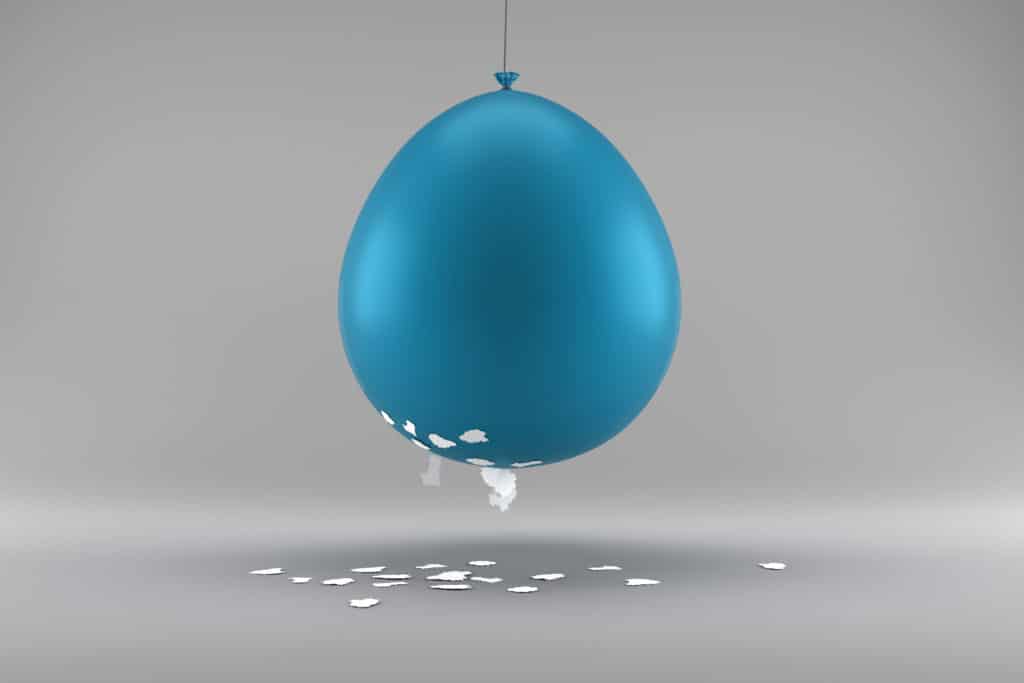
Why do you get an electrostatic shock?
You get an electrostatic shock when the charge builds up on you, and you touch something that is earthed or vice versa.
For example, if you scuff your feet along a carpet and then touch another person or a metal object, you’ll get a static shock as the electrons jump from you to the other object!
How is static electricity different to electricity?
We usually think of electricity as a current that flows.
Static electricity is a build-up of electrons without a current to flow along.
When is static electricity dangerous?
When static electricity builds up on an object, the potential difference between the object and the earth increases. If the potential difference becomes big enough, electrons can jump from the charged object to the earth, creating a spark.
- Sparks in places with flammable materials can cause an explosion.
- Build up of static charge can interfere with radio equipment.
- Lightning is also caused by static electricity and can cause fires when it reaches the ground.
How can you stop static charge from building up?
Objects can be earthed to prevent too much static charge from building up. This means a conductive material gives the static charge a route to travel to the ground, stopping the static electricity from building up.
Uses of static electricity
In a photocopier
Reducing dust and smoke.
In electrostatic sprayers.
Easy static electricity demonstrations
You can use static electricity to make tissue paper frogs jump up to a balloon. This is a lovely, simple activity that can be turned into an investigation by using different types of paper or by rubbing the balloon for various lengths of time on a surface to charge it.
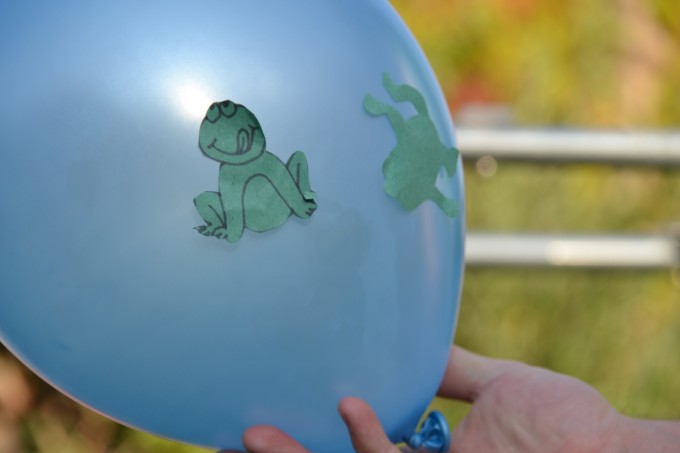
Frugal Fun for Boys and Girls has a great jumping goop investigation.
Learn, Play, Imagine has a fun way of creating a static electricity spark.
Find out how to separate salt and pepper using static electricity.
You can also bend a stream of water with static electricity!
Do you have any static electricity experiments to share with us?
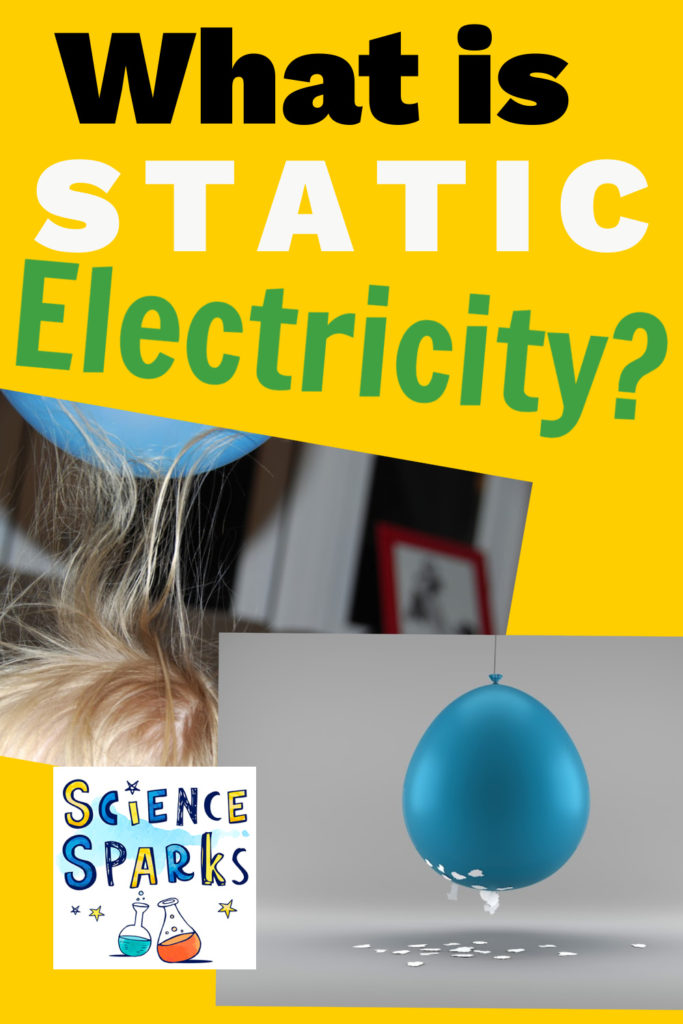
Last Updated on June 13, 2024 by Emma Vanstone

Leave a Reply